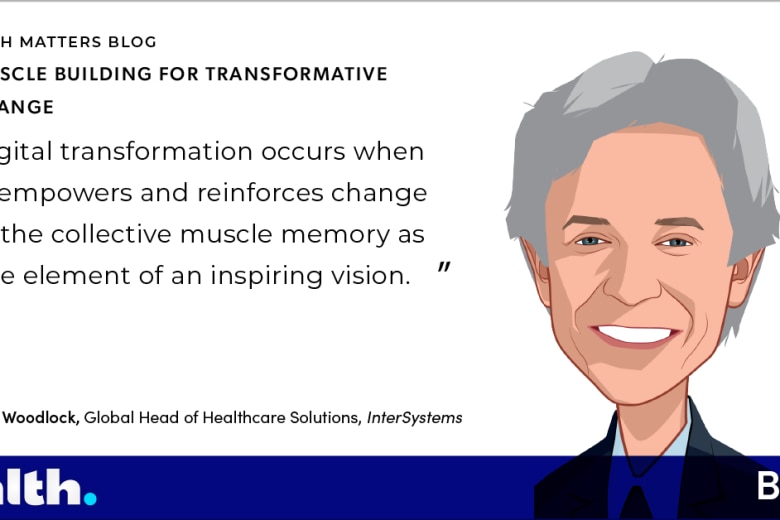Yep, I just did that.
Acronyms and abbreviations are a fact of life in health information technology. It gets worse when you pour in the alphabet soup of value-based payment models. The underlying care and payment models they represent are obviously more relevant, and to some, concerning.
It is easy to be overwhelmed by all this complexity. So I decided to take a swipe at administrative simplification in the form of three key questions.
1) Are these new care and payment models fads or future?
A 2011 quote from Dr. David Blumenthal rings true: "There are three major influences on the efficiency and quality of care. The first is payment, the second is how care is organized, and the third is the information that's available for decision making. Payment sets the tone."
When you change the way you pay for care, you beget a quantum shift in the business model, which in turn elicits a gamut of organizational responses. These responses range from denial to acceptance; bolder organizations embrace the shift early. Others deny the obvious for as long as possible, hoping and coping.
HHS has announced it will aggressively expand value-based payment models such as Accountable Care Organizations (ACOs) over the next three years. It seems that the train has left the fee-for-service station. What remains to be seen is which tracks it takes and how long the journey lasts.
Do you need more convincing? Further evidence is provided by New York's Delivery System Reform Incentive Payment (DSRIP) waiver, approved by CMS. This $6.42 billion program requires that New York Medicaid migrate 90% of all payments to value-based models over the next five years. New York's approach is a leading indicator of future DSRIP waivers. It reflects other Medicaid and Medicare delivery system reforms and innovation grants funding Patient-Centered Medical Homes (PCMH), ACOs, and Bundled Payment Care Initiatives (BPCI).
So, fad or future? Future.
2) What are the common threads in new delivery and payment models?
Three themes are woven through all new payment models: integration, coordination, and prevention.
1. Integrating data and systems is foundational to a current, comprehensive, and credible patient-centric medical and social record. It enables serving up that record within the care process, either in its entirety or in digestible portions.
2. Integration enables coordination by making patient information available in the right place at the right time to the right participants. The patients who use the care system the most also have many participants in that care, each of whom needs information presented in a way that makes sense to them and that matches their workflows, regardless of setting, system, or application.
3. Value-based models call for proactive prevention. They work best when patients and caregivers have the information and tools to minimize illness in the first place, and to take the right actions when it does occur. Understanding opportunities for health improvement, addressing gaps in care, and risk avoidance becomes high value.
The people, processes and products required to be successful in a value-based payment world do not match up well to what most healthcare providers, payers, and patients have available. Today’s organizational structures, workflows, and portfolio of technology investments all need to evolve.
Simple enough, right?
3) What are the implications for realizing a return on your health information technology investment decisions?
Health information technology must automate and improve integration, coordination, and prevention. It must enable the shift in care delivery and payment. And return on investment (ROI) for that information technology must be measured in months, not years. We don't have years to hope for improvements. We need to see them now.
Core healthcare applications such as electronic medical records (EMRs), billing systems, care management tools, and analytics were built for a fee-for-service world. EMRs are critical to value-based care models, but by themselves cannot unite data and applications from across the care continuum in a way that accommodates new and continually morphing needs. Care management and analytics applications architected for claims data cannot easily accommodate clinical and social data. Risk identification, stratification, and prediction tools require timely feeds from multiple sources to yield value.
It is rarely an option to rip and replace existing systems. Additional investments must make better use of the technology already in place, while delivering new, additional value in line with the demands of a new model of care.
Of course, the solution comes with another acronym: HIE.
Not just any HIE, but enterprise health information exchange built for a value-based payment world. Earlier generations of HIE were designed primarily to move a piece of data from point A to point B, which supported the volume-based fee-for-service model. Next-generation HIE must take in all manner of data related to a patient, organize it, accommodate the needed workflows and business processes, and deliver it in manner that it can be applied to get ahead of risk. Enterprise HIE underpins integration, coordination, and prevention.
Next-generation HIE must also mirror the incremental implementation of the payment model. Most models start with modest calls for care measurement and improvement, and then raise the bar every year. That is, there is a long-term vision for the mature model, and there are clear measurements of value along the path to maturity. The same philosophy should hold true for the deployment of health information technology.
The need to connect vision to value is the real implication for HIE, or any health information technology effort. Organizations that can deliver immediate, incremental, and progressive value will survive and thrive.
Consider some examples designed to improve transitions of care. Alert notifications provided to caregivers when patients are admitted to or discharged from the emergency department or hospital support follow-up care. Health plans can work in conjunction with hospitals to make sure that the medication data from claims payments is made immediately available to clinicians in the emergency department to improve care and safety for their members. These are not three- or four-year aspirational project plans; they are three- or four-month transformational actions.
To measure ROI in months rather than years, you need a multi-year visionary roadmap. This allows you to plot a definitive course that interlocks with the evolution of value-based care.
The legend for the roadmap, of course, will be full of obscure acronyms.



































